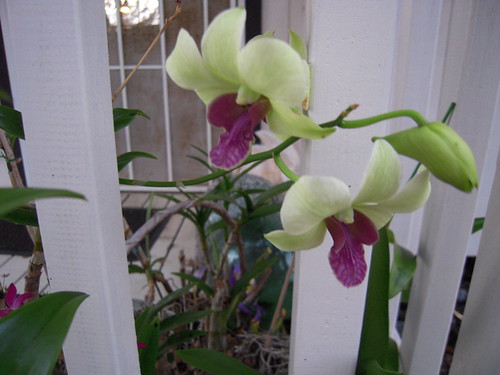The official theme of this blog is ” homesteading, food, travel, and philosophy from the side of a volcano in rural Hawai`i.” So far, I’ve done mostly the first three, but very little of the fourth – philosophy. I could elaborate philosophically on many topics, and over the next few months, bear with me as do more of that.
The official title of this blog is “Lava to Lilikoi,” and that is a great deal like saying “how to make lemonade out of lemons.” In other words, when given an acre of lava, how do you produce lilikoi (our name for passion fruit) in abundance?
The drought has discouraged me from doing a lot of gardening, although I did plant 45 garlic cloves this week! They don’t like a lot of water, so this area should be perfect for them. I bought a pound of California softneck garlic from an heirloom seed company, since most stores sell garlic that is treated to prevent it from sprouting. (I understand that health food stores might have organic non-treated garlic, however.)
The opening photo shows some of these garlic bulbs, plus a few miniature pumpkins from the grocery store, and a couple of even tinier acorn squash that never did grow big enough to eat!
One of the many lessons of gardening I have learned has been not to plant anything that requires plenty of water, plenty of rich soil, or a different climate.
For example, my geraniums have taken over various spots of my acre, and they add a great deal of color to an otherwise gray landscape. Herbs in pots are growing nicely. I have been able to get some delicious beets and arugula occasionally. My donkey tails seem to do well. Palms that don’t require a lot of water are doing okay. Various flowering shrubs have done fine (when the Mouflon sheep don’t eat them). Other veggies did quite well when we had regular rains, or when the birds didn’t eat them.
Please don’t mistake this for complaining! I’m just stating facts about my own particular situation. Everyone in my garden club seems to be suffering from the drought, too.
So on this weekend after Thanksgiving, I want to give thanks for the beautiful ancient ohia trees scattered around my acre, for the hens that give me delicious fresh eggs, for the splashes of magenta, purple, orange, blue, red, pink , white and yellow that adorn my lava “lawn,” for a year-round temperature that allows me to be free from snow and ice. Living and gardening on lava makes me thankful for every single sprout!
I’m also grateful for my friends, whether here or on the mainland, who keep in touch; for my students who challenge me, and who keep my mind active and alert; for good health that permits me to continue gardening and teaching; and for my family members who make me proud to be their mama, grandma, and great-grandma, sister, cousin and aunt!
Finally, I’m grateful for my little Katrina, a sweet and photogenic joy in my life! Doesn’t she look pretty in blue?
A hui hou!





















 Is that pot big enough to sleep in?
Is that pot big enough to sleep in?























